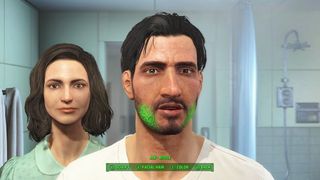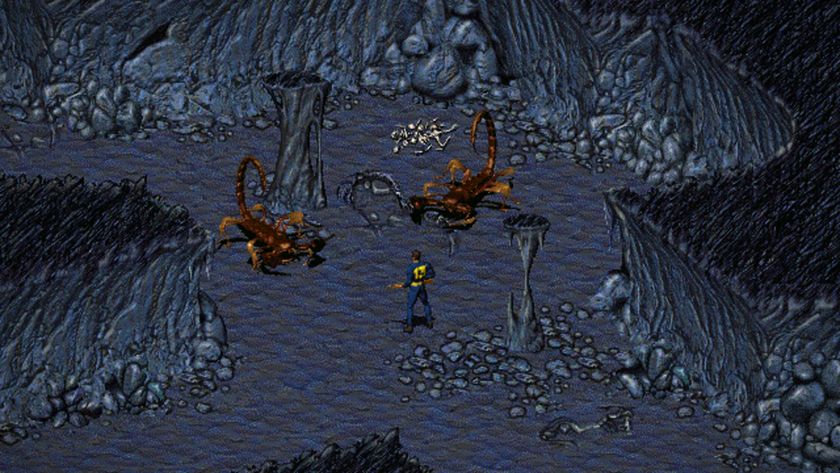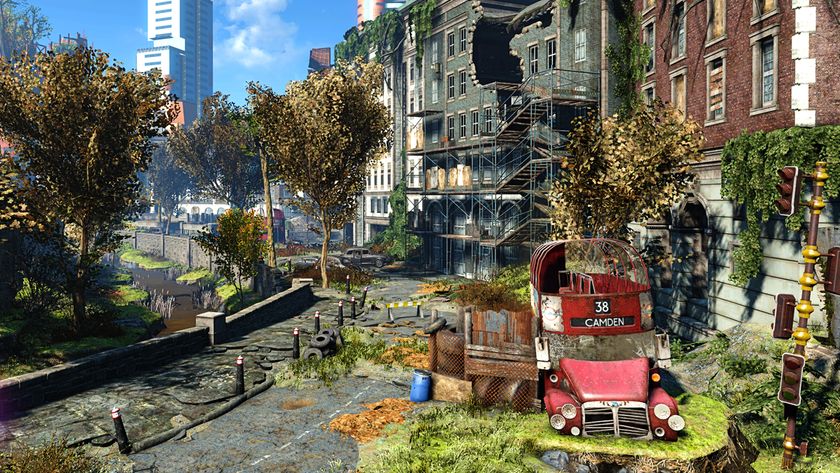Fallout 4 kind of still uses the Oblivion engine, but do not fear 'Bethesda face'
Fallout 4 looks lovely. Really, really lovely. That bright, airy feeling. That diffused, misty lighting in the woods. The fact that there even are woods, and plants, and colour, rather than just the same blasted, monotone grimescape we’re so used to getting from the series’ various retro-futuristic hellholes. That must mean a shiny, fresh, new-gen engine, right?
Er, it seems not so. In fact it seems that, in a round about way, Fallout 4 is still using tech shared with Bethesda's last-gen output. Confirmed via a brief comment during Bethesda's E3 press conference last night, Fallout 4 is running on ‘a next-generation version of [Bethesda’s] Creation Engine’, effectively meaning a modded iteration of the same tech that powered Skyrim four years ago. Thing is though, for all of said engine’s new name back in 2011, Creation itself was actually an upgraded and modified version of Gamebryo, the same engine Bethesda used for Fallout 3, and Oblivion before it.
That may sound a bizarrely retro tech to be using to build this most new-gen of futures, but given that we now know Fallout 4 has been in development since 2009, it’s perhaps not too surprising. After all, nothing scuppers a smooth development like mid-build engine changes. *cough*DukeNukemForever*cough*

Those fearing the dreaded ‘Bethesda face’ needn’t worry though. The nightmarish, lifeless visages of NPCs in the dev’s RPGs have (rightly or wrongly) long been cited as reason number one for Bethesda to finally bite the bullet and invest in a whole new set of tech, but so far, those nebulous ‘upgrades’ look to have evolved Creation almost beyond recognition. Nowhere is that more obvious that in Fallout 4’s character editor. Perhaps in a response to previous criticism, Bethesda has show off a new, freeform, entirely slider-free facial editor controlled via dynamic, real-time modelling interface. Think Mario 64’s title screen with less whimsy, basically. The in-game results look great, but the best news is that the same tool has apparently been used to design all of the NPCs in the game.
Beyond that, a much freer approach to conversation is promised, Fallout 3’s weirdly rigid, ‘creepy-stare-out-until-the-conversation-is-over’ approach now a thing of the past. Having a fully voiced lead character helps massively, of course, but new third-person camera options, as well as much greater agency when dealing with NPCs (“you can walk away whenever you want, you can shoot ‘em in the face if you want”) should prove a massive boon. Colour, dynamism, and human characters you can actually distinguish from the game’s zombies? Sounds like that’s three of Fallout’s biggest issues dealt with already.
For everything else E3, check out our hub page, where you'll find every conference livestream your heart could possibly desire.
Sign up to the 12DOVE Newsletter
Weekly digests, tales from the communities you love, and more

Disco Elysium lead says original Fallout is an RPG "that's almost Biblical in its annihilation," making "other post-apocalyptic worldbuilding seem like an amusement park"

As if Fallout: London wasn't already big enough, its devs now say the mod's "first DLC is getting closer" with "more surprises" to come
Most Popular








